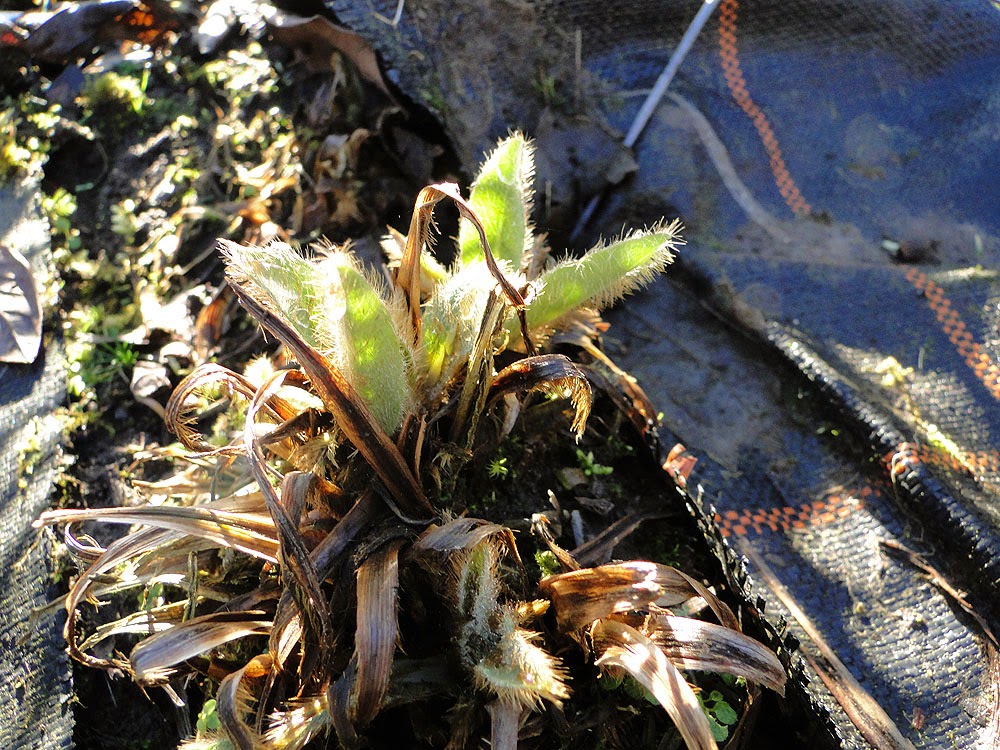Meconopsis Visual Reference Guide. Includes Photos, Taxonomy And Cultivation Information.

Sunday, 30 March 2014
Friday, 28 March 2014
Sunday, 23 March 2014
It is nice to be able to put some Meconopsis on the site! It is still very cold here but at least it is sunny and this is warming the ground up enough to put dormant plants in growth. This is the hybrid between Meconopsis grandis and Meconopsis intergrifolia. In the last decade or so M. grandis has been shown to have at least 3 sub species and M. integrifolia too is variable and has been split with a new species M. pseudointegrifolia. M. x Beamishii is a fertile hybrid and I guess would be quadraploid to account for the fertility and given the variability of the parents, this too may well be in different forms - with perhaps new crosses made in future with some of the variations of the original parents. In growth, in flower and particularly in leaf of this looks like M. grandis is one parent. There is a different species called M. x Sarsonsii which is a cross between M. betonicifolia and M. integrifolia. I have recently received seed of this from Russia and hopefully this will eventually produce perennial plants and again the leaf should resemble that of M. betonicifolia.
 A very ordinary plant in a dry part of the garden - Vinca major cultivar. I illustrate this to make a point. I simply cannot remember a year when a range of different types of plants are flowering so effectively. It has to be the result of a period of hot dry weather in mid summer in 2013 followed by a mild and almost frost free winter. Wild plums and wild cherries in the countryside are flowering equally brilliantly in East Fife.
A very ordinary plant in a dry part of the garden - Vinca major cultivar. I illustrate this to make a point. I simply cannot remember a year when a range of different types of plants are flowering so effectively. It has to be the result of a period of hot dry weather in mid summer in 2013 followed by a mild and almost frost free winter. Wild plums and wild cherries in the countryside are flowering equally brilliantly in East Fife.
Tuesday, 18 March 2014
I have said before that one of the wonderful things about a love of plants is sharing them. I have a good friend in Japan, Tetsuo, who has provided me with these wonderful forms of Hepatica which are in flower now and very much thrive in a warmer site in my peat garden. These are equally at home in partial shade.
It also makes another point and that is most of my deciduous Meconopsis are only just beginning to poke through the ground and plants like this create interest in a garden dedicated to Meconopsis when there is not much else in flower. I shall add some other plants types in this category over the next few weeks.
I have only six Meconopsis punicea to flower this year and seed germination has been slow. The first flower buds are just showing. Fortunately a friend has a lot of seedlings but I still hope my seed, including seed bank seed, will germinate soon. This species benefits from growing on the seedlings as well as one can to produce large plants that will achieve maximum flowering size in 2015. Nearly all are biennial though there are some exceptions. This extremely beautiful species needs a lot of attention to make sure it stays in cultivation.
Friday, 14 March 2014
Iris are a genus that do well here in dry east Fife. I grow many of them in a bulb frame that can be covered in winter - but usually is not. Others like it really dry and I grow these in a deep made up bed in a large greenhouse with alkali soil and a great deal medium coarse grit. They are kept pretty dry year round and not watered at all in winter.
This is Iris nusairiensis in an alpine bed inside the green house. It has slowly multiplied up but I have given too many away! It is described from the Jebel Nusair in Syria
Monday, 10 March 2014
These two images were taken in the bed where I grow perennial blue poppies in Wick, Caithness - in the very far north of Scotland. They are in an open field but with a netting wind break round them. Over many years I have never lost a single plant here and propagated on from many by division. They also set really large amounts of seed. Most of these are the hybrid x Lingholm but there are several forms of the true species of M. grandis. The climate in Caithness is cool and usually moist and this is why they grow well. I grow these plants here in Fife on the dry east coast of Scotland and I struggle to keep them, especially in a hot summer. The black Phormisol sheeting is an effective weed suppressant and helps retain soil moisture
Subscribe to:
Posts (Atom)











